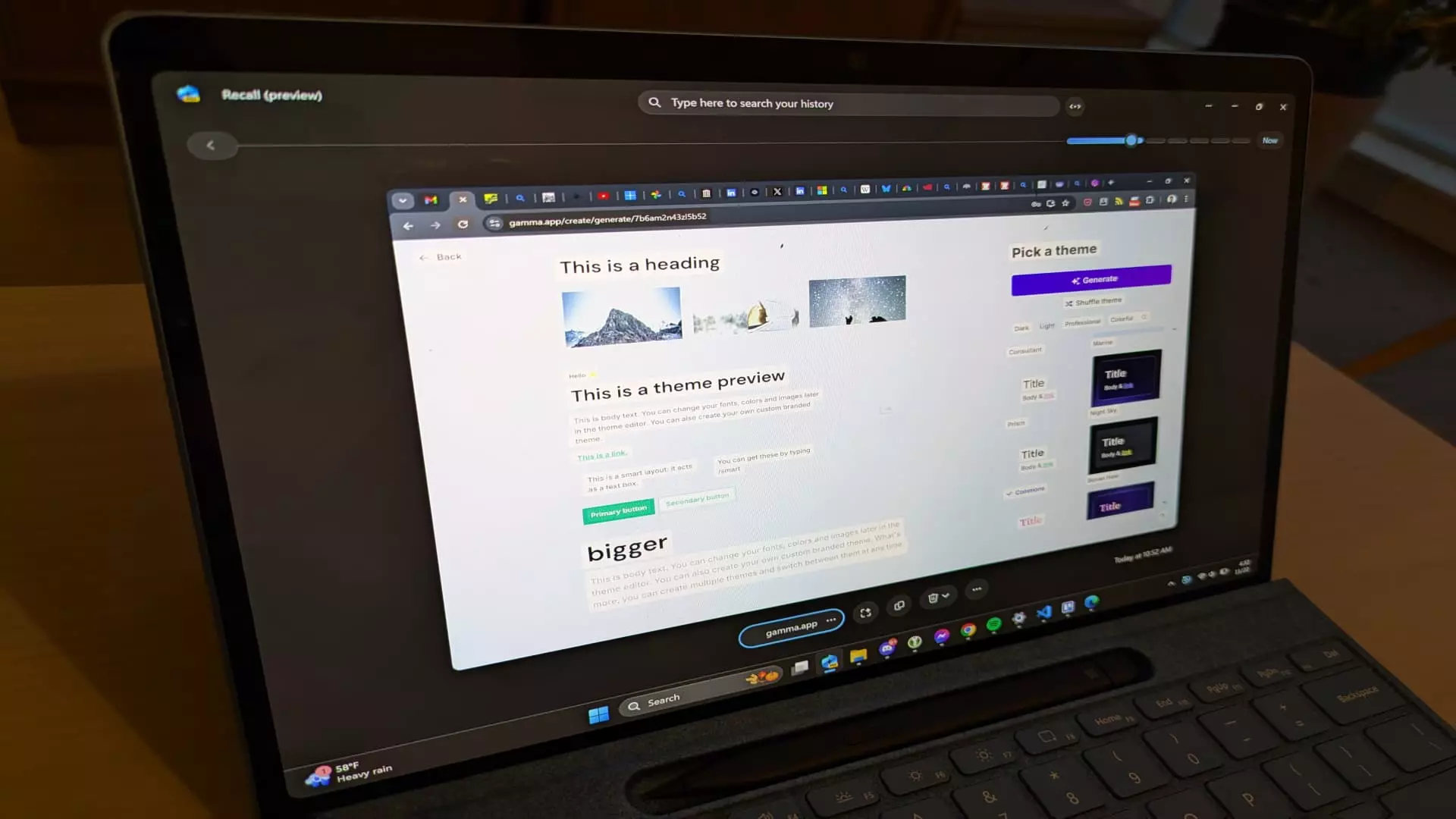On the forefront of technological innovation, Microsoft unveiled the Recall feature as part of its Copilot+ initiative, targeting users of advanced Windows 11 PCs. Announced in May, Recall was described as a revolutionary tool harnessing artificial intelligence to enhance the user experience by acting like a photographic memory of sorts. However, as the beta testing phase unfolds, a myriad of concerns and functionalities have surfaced, warranting a deeper exploration into both its promise and its limitations.
Recall aims to empower users by capturing screenshots of their activities, enabling them to search through this visual data using keywords. At its core, this technology leverages sophisticated AI capabilities housed within devices featuring Qualcomm Snapdragon processors alongside built-in neural processing units. These processors facilitate the heavy lifting involved in processing vast amounts of image data, ostensibly creating a seamless experience for users.
However, despite the advanced backdrop of this technology, the reception has not been universally positive. Early feedback indicates that the anticipated efficiency may be hampered by the actual responsiveness and accuracy of the feature. The potential for Recall to revolutionize how users interact with their digital environment is belied by several operational shortcomings that need addressing.
Cybersecurity experts have voiced significant apprehensions regarding the inherent risks associated with Recall. Initially, the feature sparked criticism over data privacy issues, leading Microsoft to take precautionary measures, such as encrypting the underlying database and disabling the feature by default. While these adjustments were welcomed, the very existence of such a feature raises fundamental questions about user consent and data management.
Moreover, while Microsoft is striving to maintain user privacy and security, the functionality itself can be perplexingly inconsistent. Instances have emerged where screenshots were captured unexpectedly or where specific applications did not register as intended in terms of blocking recording. This lack of reliability could lead to confusion for users who rely on precision when managing their digital footprint.
In my own experience testing Recall, several glaring issues became apparent. Although the promise of instant recall sounds appealing, there is a noticeable delay in how quickly the feature captures screenshots. Users may expect a flawless archival of their activities, yet the reality reveals that this memory can leave significant gaps. For instance, while scrolling through social media or browsing multiple tabs, I experienced delays of several minutes between captures.
When attempting to utilize the search function, the inconsistencies continued to manifest. In several instances, textual searches yielded only partial results, limiting access to vital information that was literally at my fingertips. Despite there being tangible mentions of “Yankees” across two images, the search algorithm only retrieved one. This suggests a need for improvement in how Recall indexes and processes the information it collects.
Notably, while the search speed is commendable, navigating through previous screenshots presented another layer of frustration. Transitioning from one image to another was not as fluid as one might hope. This additional loading time detracts from the overall user experience, particularly for those engaging with the feature in a fast-paced environment.
Nevertheless, what stands out amid the critiques is the potential utility of Recall. Despite the existing flaws, benefits lie in its ability to link back to previously viewed content, allowing users to seamlessly return to moments of importance with a simple click. This may prove advantageous for those who engage in extensive multitasking or frequently revisit web content during their work.
As it stands, Microsoft’s Recall feature embodies both significant potential and conspicuous pitfalls. While it strives to offer users an enhanced digital environment through AI-driven memory utilization, the operational inconsistencies pose challenges that must be addressed. As the testing phase continues, capturing user feedback will be critical for refining this promising yet imperfect tool. As with many tech innovations, adaptability and responsiveness to user needs will determine whether Recall can truly realize its ambitious beginnings in the world of digital memory.

